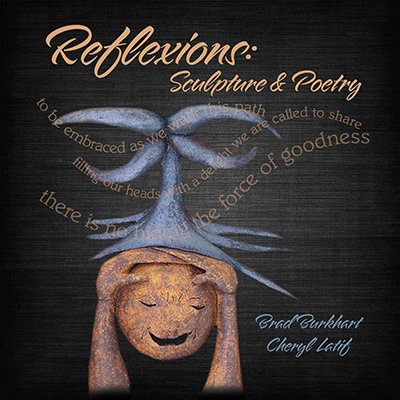I am a working sculptor who has been producing clay wall relief panels for over 20 years focused on contemporary mythical/ archetypal imagery. In late 2001, I serendipitously came across a book by Suzi Gablik called Has Modernism Failed? I was impressed by the succinct analysis of modern art offered in this book which contrasted with the obfuscating writings of most contemporary art critics. Ms Gablik’s point was that art has somehow gone astray at the end of the 20th Century and is no longer socially or spiritually relevant.
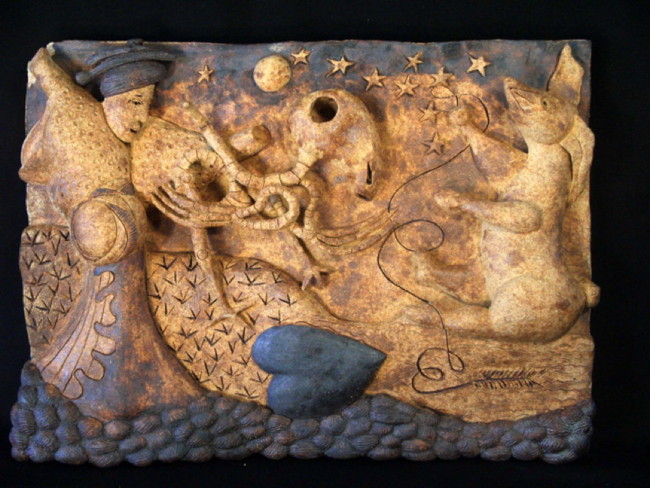
First Flight of the Archaeopteryx
This point resonated with my own thoughts. In develop the direction of my own art, I have increasing moved away from the modern idea that art is a socially and spiritually disconnected, technically learned, beauty-making or philosophical process. Instead I have become increasing interested in viewing art as at the core of culture making and individual meaning. I have concluded that modernism reflects the final dominance of scientific thought over the evolution of culture. In prescientific societies, humans relied on an intuitive approach to “knowing” reality that was largely detached from such scientific reasoning. A major consequence of valuing the insights of intuition over rationality was that intuitively based cultures were strongly community oriented, whereas modern cultures (based on rationality) celebrate the individual instead of the social whole and leave the individual without meaning. The emphasis on the primacy of scientific thought began, for the most part, with the Renaissance in Italy and the Reformation movements of Western Europe, although it had antecedents in early Greek culture. The modern era since the Renaissance has witnessed the blossoming of scientific orientation and the increasing marginalization of intuitive thinking. However, it is my conclusion that this scientific orientation reached its climax at the end of the 20th century. This “modern” developmental period in human culture was marked by a shift from believing that only knowledge gained by intuition was “real” to the current conviction that only what our rational mind sees and discovers through the use of scientific observation is “real.”

Buddah of the North
Each emphasis has certain benefits for humankind. The intuitive approach emphasizes the discovery of meaning through qualitative observation and the value of community over individual development. The rational approach emphasizes command over the physical world through quantifiable observation and lauds the values of the individual over the community. It goes without saying that the two approaches have had a natural and mutual antagonism. When rationality moved to the forefront, it was fought bitterly at first. Many early scientists were killed or imprisoned for their discoveries. Subsequently, the scientific approach was viewed as a valuable new tool. Eventually, however, rationality bullied its way into being the only reliable means for knowing reality. As a consequence, intuition has been marginalized and treated as unreliable or even malevolent by current decision makers. In the process, the currency of meaning has become quantity not quality and most importantly the spiritual underpinnings of culture have been devastated.
What is the relevance of this process to art? The truthsayer/meaning makers in modern culture are obviously the scientist-scholars. Their counterparts in the older intuitive cultures were the shamans. Shamans utilized several types of intuitive skills currently divided among artists, priests, and psychologists to discover what was “real.” Art in these older cultures was aimed at enhancing the individual’s connection and integration with his or her community and the natural world and thereby on creating a meaningful way to live for the tribe/society. Such a process is a constant one, always creating new cultural adaptations to changing community and natural circumstance. Today, science performs the meaning-maker function and the shaman’s job has been discredited and marginalized.
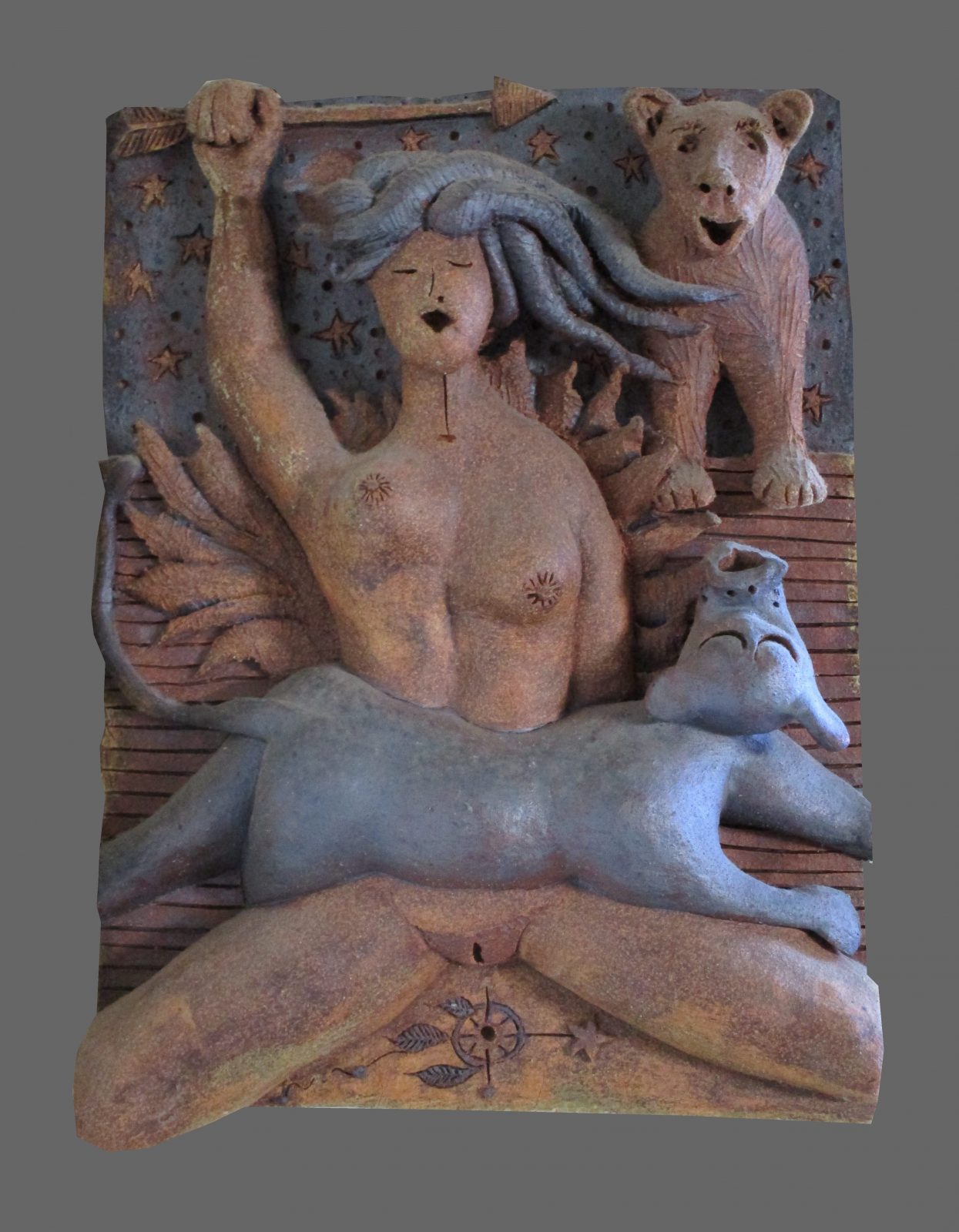
Coming of Age Song
Essential to this marginalization process has been the division and separation of shamanistic (intuitive functions) into the competing disciplines of art, religion, and psychology. This separation is brought about by numerous conventions and beliefs promulgated by science-based culture. For example, spiritual, religious, or psychologically motivated art is not judged to be real art in a secular world. Even more to the point, the most respected theoreticians in each of these disciplines have been the ones supporting the rational-scientific viewpoint. Thus, Freudian and Behavioral psychology and the western medical model of illness have moved to the forefront in psychology and medicine, while Jungian archetypal/transpersonal psychology and eastern medical modalities based on intuition have been discredited and marginalized until now by the scientist-scholars. Similarly in religion, there has been a shift in the 20th Century towards more relativistic and individualistic ethical analysis and a shift away from mythical, metaphoric, and social and natural world spiritual connection.
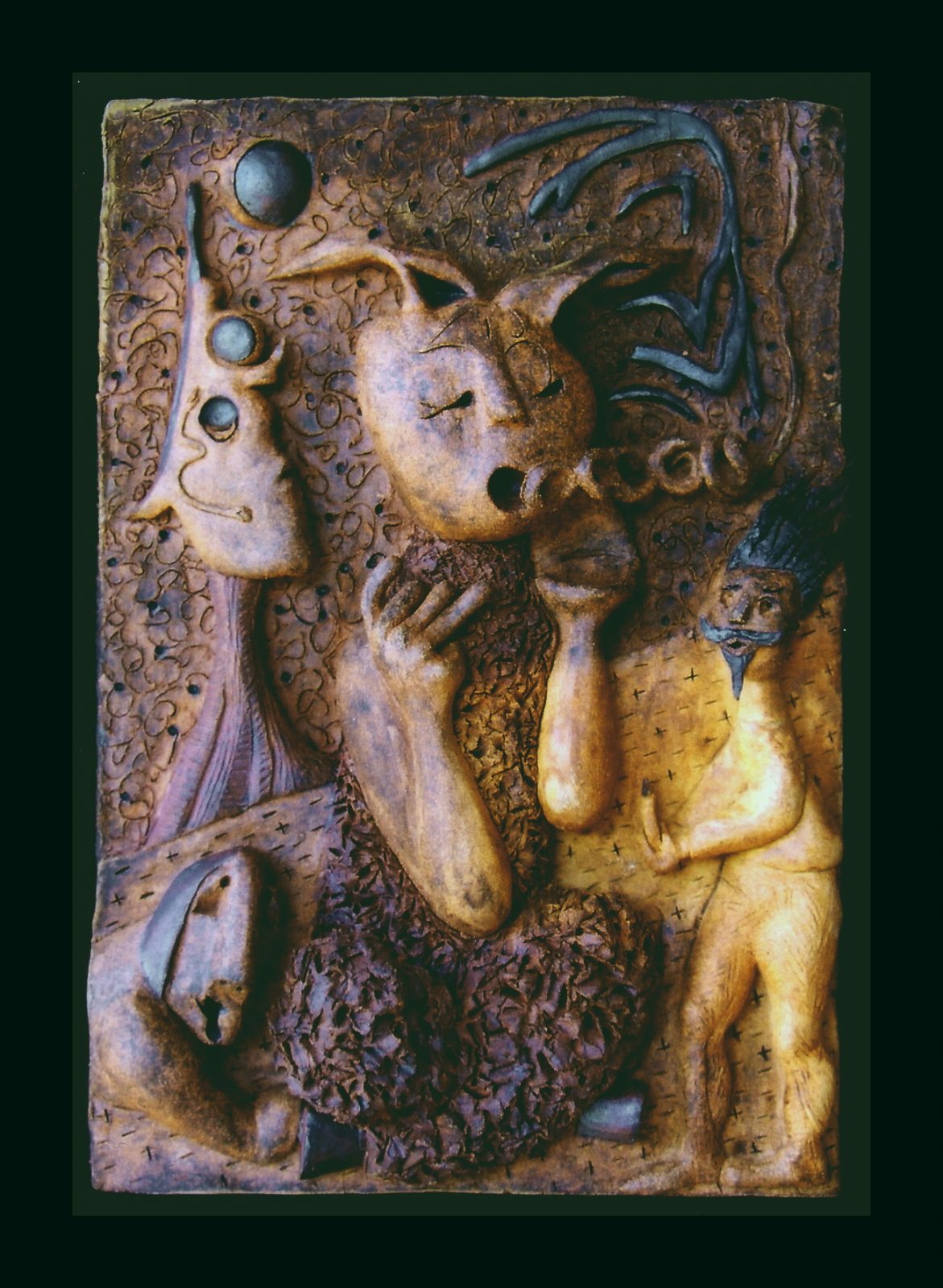
The Invisible Music of L:ife
Perhaps most striking has been the change in the manner of art description and evaluation. The language of art has been changed from emphasizing the meaning of images as measured by inspiration, to emphasizing either so-called “objective” for determining beauty or pseudo-philosophic discussion. Art analysis based on line, color, form and composition and/or philosophical debate expressed in visual form has gradually replaced a focus on the response art creates in our soul and its potential to solve social and ecological problems facing modern society. Not surprisingly, the philosopher has usurped the role of determining what is good art, while the masses are increasingly led to feel that modern art is irrelevant to either their lives or their community. It is no surprise that many of our recognized modern art critics and conceptual artists originally studied philosophy (e.g. Arthur Danto) before becoming interested in art. Neither image nor myth are any longer even required to make “high” art. Thus, the pre-eminent art movement at the end of the 20th Century became Conceptual Art, which asserts that ideas and concepts alone are sufficient to be art. Artists have become visual or auditory scientists focused on demonstrating through their work the physical ways in which humans perceive the world (e.g. pointillism, cubism), or philosophers commenting on how we conceive it (e.g. pop art or conceptual art). It is no wonder in this context art has become increasingly irrelevant to the creation of culture; and, modern art has been dominated by the very quantity-based commercial values that make it irrelevant for this purpose. Yet, until now, few have had the courage to see the emperor wears no clothes, let alone remark on it. Arthur Danto’s book, After The End of Art: Contemporary Art and the Pale of History essentially reinforces this idea that the historical development of art, and perhaps even culture itself, currently appears to be at a standstill.
Where do we go from here? 20th century science-based reality has gone as far as it can to maximize its view of reality and to marginalize meaning. We are now on information overload, and our primary social value appears to be more for less. Because of the paucity of meaning in modern life, some people are now suggesting we return to the old tribal ways, abandon the fruits of science, and beat drums again in order to discover meaning. Numerous “spiritual” groups and practices have been formed based around the ceremonies and belief practices of prescientific cultures, e.g. native Americans. Alternatively, others, including Ms Gablik, advocate that artists consciously reconnect with the environmental and social problems our science-based culture has created in order to “sound the alarm” and “change the world.”
There is a correct notion here that the artist’s intuitive insight is now desperately needed to better adapt our communities for assuring human survival on the planet. However, after much thought on this topic and having reviewed the work of many of the new “environmental” artists (see for example Baile Oakes’ Sculpting the Environment), it is my conclusion that a conscious approach by the artist to creating social meaning does not work and instead creates only further philosophical commentary not adaptive culture.
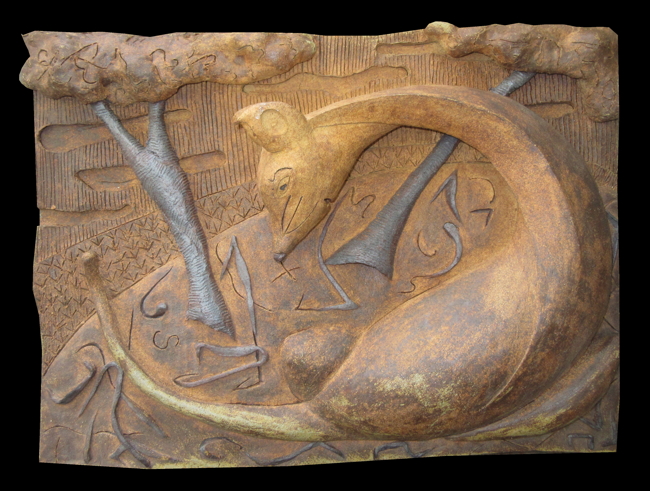
Bark of the Fauvist Dog
I am currently exploring another direction with my own work. It appears that our greatest challenge is not rejecting rationality in order to return to intuitive thinking, but instead of finding ways to integrate the two into a new paradigm for knowing what is “real.” As I see it, intuition sees the whole, while rationality understands the parts and makes the vision practical. Intuition gives us the path and rationality provides us with the means to travel the path. However, the difficulty of integrating intuition with logic is that these two ways of knowing the world are highly competitive with one another and tend to see themselves as mutually exclusive. In addition, rationality, because of its greater command of implementation tools, naturally has the edge in winning. . Nevertheless this integration is now critical to human survival and requires two conditions:
1. Intuitive truth must lead the way while rational truth checks on the usefulness of its “vision” for society. This is a radical departure from our current values, as this tenet reverses the power relationship between intuition and rationality in modern life. More importantly, it assumes both intuition and rationality have something important to contribute to our survival and that neither can be marginalized if we are to know what is real.
2. Secondly, the artistic (shamanistic) process needs to be recognized as the primary means for accessing intuition to create spiritual and psychological integration within ourselves, society, and in our relation to the natural world. Part of revalidating intuition as the primary “knowing tool” requires that the artificial boundaries erected between psychology, religion, and art be dissolved.
Because intuition has been so marginalized in our current culture we have only a vague notion of what it is and how it works. What do I mean by intuition, and how do we access it through art? First of all, it is not a conscious mental process where we “think or plan things out” in some sort of logical or intentional progression. Nor is it a process that can be overly focused on narrow problem solving. This is the failing of art focused on raising awareness about specific social or environmental problems. This art does not create answers to the problems it addresses but merely emotionally dramatizes their negative effects, somewhat like successful advertising; hoping to make us want to solve the problem. Such art remains essentially a conceptual enterprise with little impact on our imaginations.

Ammah Bearing
In contrast, intuitive creation accesses answers through an unpredictable “waiting-for-the-answer process” from what now seems a mysterious place in the psyche. At their best the answers derived from this intuitive process can transcend the individual to inspire the community. Unlike reason, we cannot control this process; we can only place ourselves in places or situations and wait for the muse to speak, but we cannot proactively make it happen.
However, intuitive truth has one serious limitation. The “answers” it gives cannot always be trusted. Unlike rationality, which leads to clear provable conclusions, intuition sometimes comes up with answers that either do not work or are actually detrimental to solving problems or creating meaning. For example, the Salem witch trials, based more on intuition than on provable facts, resulted in the killing of many innocent women. Thus prejudice, as well as real truths about the world, both have their basis in intuition.
This is where science and rationality become useful as deciphering agents for the intuitive vision. The artistic creation needs to be reviewed to determine whether it is useful to its culture. This is not a voting process but rather a problem-solving one. If art works to create solutions for society, then it inspires better culture; if not, then the artist begins again. Thus the role of the artist isn’t so much to create culture, as to fathom it. The visual artist uses intuition to come up with integrative images, but the worth of these images is determined by their ability to address social and environmental challenges to the society in which the artist lives. Thus, the focus is taken off the individual and commodity value of art and placed back on its qualitative usefulness to inspire cultural evolution for survival. Also, the highest intuitive insights derive from the Collective Unconscious, (not just the artist’s dreams or imagination), the artist cannot take personal credit for the work. Rather, the artist acts as a vehicle. Socially relevant art is thus the opposite of an egotistically centered success process or a reflection of present circumstance. Instead, new culture is created at any given time out of the interaction between the needs for meaning in a society (which intuitive consciousness accesses through artistic output and practice) and the grounding of intuitive adventures in the practicality of person, social, and ecological practice (which is the role of science).
Let me use a story from my own art to illustrate these principles. I have a clay relief piece called “Birth Worship” which was selected for exhibition at an art show focused on environmental destruction. The piece shows an image of a fetus emerging out of flames from the side of a woman in a ritualistic setting. It appears to celebrate the birth process, hence its name. All artists were asked to write about how their work related to environmental destruction. The connections of many works at the show were obvious because they had been consciously chosen. For example, the woman who had created a half scale replica of a radioactive materials storage tank at the Hartford Nuclear Waste Disposal Site out of tie-died silks so that observers could enter the tank and think about the dangers it represented. However, the reason for the selection of my piece was initially unclear to me, as I had arrived at the image through intuition. However, after some thought about the image, I realized that the worshipping of the birth process had a direct relationship to environmental destruction and I wrote: “If we lived in a world where we truly worshipped birth, we would not be destroying our environment.”
What I believe then, is that it isn’t the initial conscious pursuit of social relevance that the artist should be seeking, but rather, its unconscious pursuit through intuition and then its subsequent grounding by community wisdom into an inspiration for personal and social development. In this way, the artist creates a qualitative social vision, which escapes the limitations and domination of the quantitative-scientific worldview.
I will conclude by trying to ground this discussion in an explication of my own artistic process. I begin my art by randomly drawing pencil lines on paper. After awhile, tangible images emerge inspired by intuition, which I then refine into a finished sketch. This unfocused “sketching” is one of the simplest ways an artist can intuitively access reality. I have found that images derived in this way transcend the personal and, unlike the majority of dream images, reflect larger social and environmental connections. They also reflect the circumstances of the particular place on the planet where I choose to create them. For example, the only time the Hope Indian Koshare figure appeared in my work was when I was sketching in Santa Fe, New Mexico near where that culture is based. After sketching, I translate the sketched images into clay relief panels to facilitate discussion of them. Each panel tells a story which can only be deciphered by conscious discussion. This discussion connects the intuitive truths reflected in the piece with the “real” world. The naming of each piece becomes a way of becoming conscious of these inspirations behind the panel stories.
When I first started this work, I thought the stories the pieces offered were purely personal and therefore not real art—a means of personal metaphorical problem solving similar to dreaming. Over time I discovered that I never dreamed these images; instead, they came entirely from my connections with the outside culture and environment in which I lived, a place Jung called the Collective Unconscious. What confirmed this interpretation for me were four things:
1. I would often create images from ancient or other cultures that I was not familiar with but which others knew about.
2. Others viewing the images would know more about the “story” behind the pieces than I.
As the stories were brought to consciousness, what initially appeared to be images or stories from the past turned out inevitably to address current social and ecological concerns, not my personal travails.
Whether the images were discussed separately or in a group setting a fairly consistent “objective” message which all could agree on would emerge in the naming process for each piece.
As a result of these realizations, I moved more and more towards having groups of people help me name pieces. I found that often each person had a part of the story to tell. Thus my intuitively derived images moved into social problem-solving relevance through the conscious group examination of the inspiration behind them.
The interesting part of this social naming process is that it reverses the current alienated relationship which people have with the works of artists. Because we currently value individual viewpoint over social agreement, we often find ourselves “agreeing to disagree” with those who do not see it our way. This is seen as the highest value of individualism in our scientific society. However, this process is socially disintegrative and leaves only the ennui of the existentialists or, more recently, the Deconstructionists. In contrast, when a group works together to name a work of art, the evolution of meaning in a piece becomes participatory. The process of naming creates, rather than diminishes, group connections. To me this is the essence of cultural evolution and the highest value of art to society. In contrast, heightened individuality disintegrates social systems and alienates humans from each other and their environment.
Brad Burkhart, Escultor del Corazón



